“I want to read the BEST translation of Tolstoy’s Anna Karenina!”
So you want to read all about the challenges of marriage and divorce, faith and farming in Tolstoy’s novel Anna Karenina, and you don’t read Russian. Welp, me neither.
Fortunately, the novel has been available in English almost as long as it has been available in Russian.
Anna Karenina was originally published as a serial from 1873 to 1877 in The Russian Messenger. It was published in book form in 1878.
The novel has eight parts, and used to be divided into two or more volumes. Now it’s usually published as just one physical book.
Some translations focus on making the text accessible by modernizing the language, Anglicizing the names, and paraphrasing what would otherwise be confusing details; others hew closer to the original but supply explanatory footnotes, endnotes, frontmatter, and backmatter to place the work in context.
If you opt for a version that has any sort of introduction, DON’T READ THE INTRODUCTION before reading the novel. Introductions typically have spoilers, and many readers prefer not to learn of the ending before actually reaching it.
Anna Karenina: Why is the novel sometimes titled Anna Karenin?
As a married woman, Anna Arkadyevna Karenina has the surname of her husband Alexei Alexandrovich Karenin. The ‘a’ at the end turns the surname into the form used by women. This convention is simply an extension of the idea of grammatical gender, a feature of Russian and many other European languages.
Some translators and publishers chose to follow the Russian spelling of Anna’s surname (at least for the title) even though the suffix is grammatically irrelevant in English, while others have preferred to Anglicize Anna’s surname by using the unmarked (masculine) form for both husband and wife.
Here’s a helpful Reddit post explaining some of the main characters’ names in detail.
Anna Karenina: Translation History
I count ten in-print English translations out of fifteen total:
- 1887 – Nathan Haskell Dole
- 1901 – Constance Garnett
- 1904 – Leo Wiener
- 1912 – Rochelle S. Townsend
- 1918 – Louise and Aylmer Maude
- 1954 – Rosemary Edmonds
- 1960 – Joel Carmichael
- 1961 – David Magarshack
- 1965 – Garnett revised by Leonard J. Kent and Nina Berberova
- 1970 – Maude revised by George Gibian
- 1978 – Margaret Wettlin
- 2000- Richard Pevear and Larissa Volokhonsky
- 2008 – Kyril Zinovieff and Jenny Hughes
- 2014 – Rosamund Bartlett
- 2015 – Marian Schwartz
Anna Karenina: Translation Comparison
I have added an extract for each translation so that you can compare how the different translations sound.
Who was Nathan Haskell Dole?
He was an American editor and author who translated works from Russian, Spanish, French, and Italian. He edited a twenty-volume edition of the collected works of Tolstoy. Some of his translations and at least one original work of his own are available at Gutenberg.org.
If you’re a New York Times subscriber, you can read his NYT obituary.
About the Dole translation of Anna Karenina
- Powell’s Books: “Who’s Afraid of Anna Karenina?” by Kristen Berg
Dole was “not fluent in Russian”, and used the French edition to arrive at his English translation. - Oxford University Press: “A Woman’s Iliad?” by Roasmund Bartlett
Bartlett, author of one of the recent translations, characterizes Dole’s as “pioneering but wholly inadequate”. - Financial Times: “Tolstoy Translated” by Rosamund Bartlett
[Dole’s] version suggested “the geological subsidence of a layer of Russian into a substratum of English, leaving a number of words to linger fossil-like amid the latter in untranslatable durability”. - The Oxford guide to literature in English Translation: “Tolstoy” (2000) by Catriona Kelly
Dole made elementary errors such as translating ‘sideburns’ as ‘beard’.
Extract from the Dole translation of Anna Karenina:
Get the Dole translation of Anna Karenina
Dole’s introduction is included in the Digireads Garnett translation.
Alternatively, you can read scans of the complete book at archive.org.
Although it’s not really “in print” in the normal sense of the phrase, you can buy a second-hand or facsimile edition of the Dole translation.
Who was Constance Garnett?
She was responsible for translating seventy works of Russian prose into English for the first time. Many are available free for download at Gutenberg.org.
Whenever her name pops up, you will hear people echoing complaints by D.H. Lawrence, Nabokov and Brodsky. You will also hear people who say that Garnett’s groundbreaking, sensitive translations (which have been updated to remedy obvious flaws) will never go out of style.
She also translated War and Peace and Dostoevsky’s Crime and Punishment, The Brothers Karamazov, The Possessed (Demons), and Notes from Underground.
About the Garnett translation of Anna Karenina
- New York Review: “Socks” by Janet Malcom
“A famous description of her by D.H. Lawrence established the sense of her hurry and carelessness. Lawrence recalled Garnett ‘sitting out in the garden turning out reams of her marvelous translations from the Russian. She would finish a page, and throw it off on a pile on the floor without looking up, and start a new page. The pile would be this high…really almost up to her knees, and all magical.’ You can feel the condescension.” - Commonweal Magazine: “From the Russian, with Love” by Richard Cohen
“Nabokov claimed that all Garnett’s attempts were ‘dry and flat, and always unbearably demure,’ and that her many translations made their authors sound the same.” - Observer: “Russians Still Brooding Over Translations” by Gillian Reagan
“[Nobel Prize–winning Russian poet] Joseph Brodsky sniped that ‘the reason English-speaking readers can barely tell the difference between Tolstoy and Dostoevsky is that they aren’t reading the prose of either one. They’re reading Constance Garnett.'” - Commentary Magazine: “The Pevearsion of Russian Literature” by Gary Morson
“Students once encountered the great Russian writers as rendered by the magnificent Constance Garnett, a Victorian who taught herself the language and then proceeded to introduce almost the entire corpus of Russian literature to the English language over the space of 40 years, from the 1890s to the 1930s. Her greatest virtues were her profound and sympathetic understanding of the works themselves and a literary artist’s feel for the English language.” - New Essays on Tolstoy: “On translating Tolstoy” by Henry Gifford
Gifford says Garnett’s Russian was ‘not dependable’, and points out a specific error, but praises her ‘sensibility’ and ‘delicacy of touch’ that he says the Maudes lack, and commends her for her “refusal to tamper with Tolstoy’s syntax’, reproducing repetitions deemed important to the author’s style.
Extract from the Garnett translation of Anna Karenina
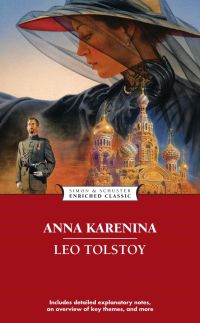
Get the Enriched Classics Garnett translation of Anna Karenina
Includes an introduction, a chronology of the author's life and work, a historical timeline, an outline of key themes and plot points, explanatory notes, critical analysis, discussion questions, and a list of recommended books and films.
Available as an ebook (ISBN 9781451685558).
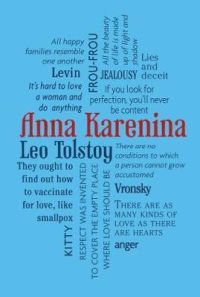
Get the Word Cloud Classics Garnett translation of Anna Karenina
Word Cloud Classics have a flexible plastic/vinyl cover. They're not exactly hardcovers, but they're a step up from paperbacks in terms of esthetics and durability.
Available as a hardcover (ISBN 9781607108153, 904 pages).
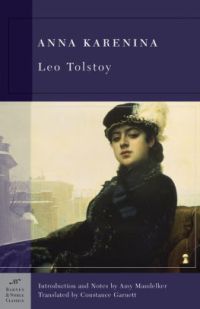
Get the Barnes and Noble Classics Garnett translation of Anna Karenina
Includes an introduction and notes by Amy Mandelker, biography, chronology, discussions of adaptations of the work, discussion questions, and suggestions for further reading.
Available as a paperback (ISBN 9781593080273, 832 pages).
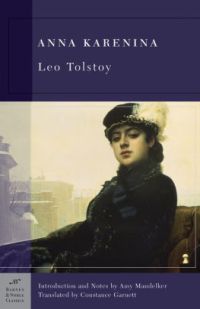
Get the Barnes and Noble Classics Garnett translation of Anna Karenina
Includes an introduction and notes by Amy Mandelker, biography, chronology, discussions of adaptations of the work, discussion questions, and suggestions for further reading.
Available as an ebook (ISBN 9781411431775).
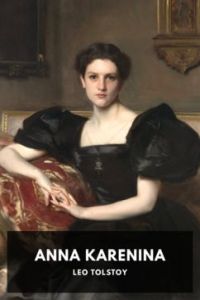
Get the Standard eBooks Garnett translation of Anna Karenina
Free! Available in epub, Kindle, Kobo, and Advanced epub formats.
Available as an ebook.
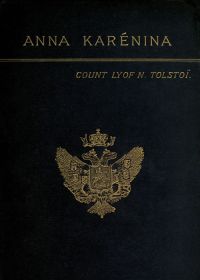
Get the Gutenberg Garnett translation of Anna Karenina
Free! Available in html, epub, Kindle, and plain text formats.
Available as an ebook.
Who was Leo Wiener?
He was a foreign-born assistant professor of Slavic languages at Harvard University. In fact, according to Wikipedia, he was the first American professor of Slavic literature. He is responsible for a limited-edition, illustrated, 24-volume Complete Works of Tolstoy project published by Dana Estes and Company in Boston.
About the Wiener translation of Anna Karenina (Anna Karenin)
In the preface to his Collected Works of Tolstoy, Wiener says he is qualified to translate from Russian by his birth and education in Russia (he was born in 1862 a city in what is now Poland but which belonged to the Russian Empire at the time) and qualified to translate into English by the 20 years he had spent in America.
He claims that “no liberties are taken with either the language or the expression of the author’s diction” and says that he is not trying to “correct Tolstoy’s style” as other translators do.
Perhaps he adhered too closely to the original.
- The Oxford guide to literature in English translation: “Tolstoy” (2000) by Catriona Kelly
“All the 20th-c. translators were thorough and conscientious compared with their predecessors… and all wrote more fluently than Leo Wiener (1862–1939), who translated Tolstoy into a sort of Baltic English, Germano-Russian in lexis, syntax, and even punctuation.”
Extract from the Wiener translation of Anna Karenina (Anna Karenin)
Get the Wiener translation of Anna Karenina
You can browse scans of Wiener’s three-volume translation at Archive.org:
Wiener Anna Karenin, Volume II
Wiener Anna Karenin Volume III
Second-hand and print-on-demand copies of the Wiener Anna Karenina translation are available via Abebooks (including, bizarrely, one that has what looks to be a Utah landscape on the cover).
Who was Rochelle S. Townsend?
She was a Russian who married an Englishman and did translation work for the publisher of the Everyman book series. Relatively little seems to be known about her, but what is known has been collected in “The Mysterious Mrs Townsend” by Michael Pursglove.
About the Townsend translation of Anna Karenina
Townsend’s translation of Anna Karenina, first published in two volumes in 1912 in London and New York, was reprinted more than a dozen times and reissued as a single volume in 1943 and 1958. It is now out of print.
Extract from the Townsend translation of Anna Karenina
Get the Townsend translation of Anna Karenina
If you are in the US, you can browse scans of some of Townsend’s translations at HathiTrust.
A few second-hand copies of the Townsend Anna Karenina translation are available via Abebooks.
Who were Louise and Aylmer Maude?
They were a Russian-speaking British couple who were friends of Tolstoy. Aylmer Maude wrote his biography. Tolstoy is on the record as heartily approving their efforts to transmit his words and ideas to others:
Better translations, both for knowledge of the two languages and for penetration into the very meaning of the matter translated, could not be invented.
The Maude translation of Anna Karenina was perhaps largely the work of Louise, who focused on his fiction while Aylmer focused on his nonfiction. Although it was considered high quality in its time, now that there are a larger number of available translations, some of them more appealing to modern ears, it seems to be the fashion to find fault (see below).
Nevertheless, the Maude translation lives on in a variety of editions, in part because of Tolstoy’s official approval, in part because it is now off copyright and thus fair game for publishers to print and reprint as much as they like, and finally because it is actually good.
About the Maude Translation of Anna Karenina
- The Chicago Tribune: “Review of Rosamund Bartlett’s translation of Anna Karenina” by Jane Shmidt
“[T]he Maudes were fluent in Russian, they ‘did not come from a literary background,’ and thus, their translation ‘shows a large number of discrepancies with Tolstoy’s original text.'” - Russian Language Journal: “The Maude Translation of Anna Karenina: Some Observations” by C.J.G. Turner
“I was astonished by how far the divergences extended. I have, therefore also been reluctant to recommend this version to students and to other readers, although many continue to speak highly of it on various grounds. To my mind it is by now seriously inadequate but only its republication twice in 1995 … has convinced me that I ought to point out some of its shortcomings in print.” - In Quest of Tolstoy: “Which English Anna?” by Hugh McLean
Slavist Hugh McLean says the Norton version with corrections by Gibian and appended critical articles is better than the version without, but notes that the Oxford version has good commentaries by W. Gareth Jones. - The Worm Hole Blog: “On the Maude and Pevear & Volokhonsky Translations of Anna Karenina“
This blogger switched translations 500 pages in and posted about her experience “in case it could help others”. “I wouldn’t say Pevear and Volokhonsky’s version is as excellent as the marketing describes but it’s a lot better than the Maudes’.” - New Essays on Tolstoy: “On translating Tolstoy” by Henry Gifford
Gifford says the Maudes were supremely qualified in having lived in Russia, having known Tolstoy and his ideas, and being able to work as a team, but lacked the language resources to convey the text with appropriate subtlety, achieving only a “neutral paraphrase”.
Extract from the Maude translation of Anna Karenina
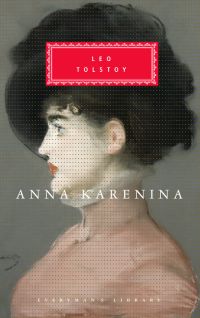
Get the Everyman’s Library Maude translation of Anna Karenina
Introduction by John Bayley.
Available as a hardcover (ISBN 9780679410003, 1016 pages).
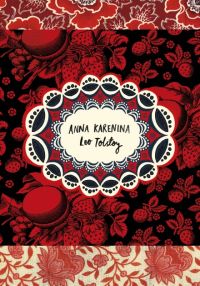
Get the Vintage Classics Maude translation of Anna Karenina
Available as a paperback (ISBN 9781784871956, 992 pages).
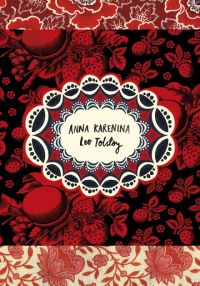
Get the Vintage Classics Maude translation of Anna Karenina
Available as an ebook (ISBN 9781409059462).
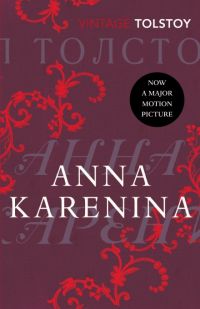
Get the Vintage Classics Maude translation of Anna Karenina
Available as a paperback (ISBN 9780099540663, 992 pages).
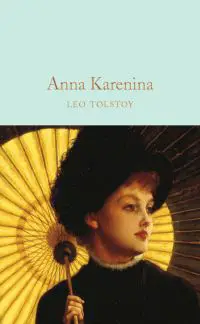
Get the Macmillan Collector’s Library Maude translation of Anna Karenina
The books in the Macmillan Collector's Library series are SMALL hardcovers with gilt edges, a ribbon marker, and real cloth binding. As long as you're okay with a small font size, they are suitable for collectors or as gifts.
Available as a hardcover (ISBN 9781509827787, 1136 pages).
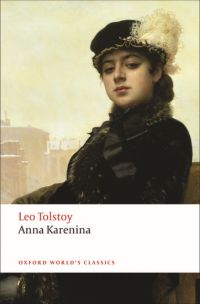
Get the Oxford World’s Classics Maude translation of Anna Karenina
Introduction and notes by W. Gareth Jones.
Available as a paperback (ISBN 9780199536061, 872 pages).

Get the Oxford World’s Classics Maude translation of Anna Karenina
Introduction and notes by W. Gareth Jones.
Available as an ebook (ISBN 9780199536061).
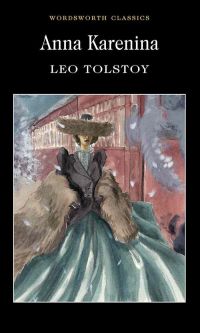
Get the Wordsworth Classics Maude translation of Anna Karenina
Introduction and Notes by E.B. Greenwood, University of Kent.
Available as a paperback (ISBN 9781853262715, 848 pages).
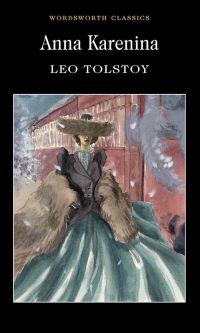
Get the Wordsworth Classics Maude translation of Anna Karenina
Introduction and Notes by E.B. Greenwood, University of Kent.
Available as an ebook (ISBN 9781848703469).
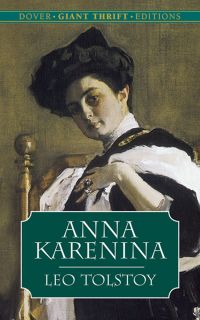
Get the Dover Thrift Editions Maude translation of Anna Karenina
Includes the translator's preface, a publisher's note, a list of characters, and a list of Russian words.
Available as a paperback (ISBN 9780486437965, 752 pages).
Who was Rosemary Edmonds?
She was a British translator of Russian literature. She translated Russian classics by Pushkin, Turgenev, Gogol, Leskov, and Tolstoy.
About the Edmonds Translation of Anna Karenina (Anna Karenin)
She Anglicized certain aspects of Russian name use, notably by removing the feminine suffix -a from Anna’s surname in the title of the novel. She also introduced anachronistic and otherwise out-of-place language in an attempt to reach contemporary readers with a new interpretation. It seems she succeeded, but did not please the literary critics, who were hoping for a translation to outshine all previous translations.
- New Essays on Tolstoy: “On translating Tolstoy” by Henry Gifford
Gifford says the Edmonds translation is “readable and it moves lightly and freely; the dialogue in particular is much more convincing than that contrived by the Maudes.” However, Edmonds is “sometimes lax about detail”, and Tolstoy’s details are important.
Extract from the Edmonds translation of Anna Karenina (Anna Karenin)
Get the Edmonds translation of Anna Karenina (Anna Karenin)
Second-hand copies of the Edmonds Anna Karenina translation are available via Abebooks.
Who was Joel Carmichael?
Joel Carmichael was an American writer, editor, linguist, translator, historian, and lecturer who studied Arabic, Greek, and Russian.
About the Carmichael Translation of Anna Karenina
Malcolm Cowley’s introduction says this translation is “more direct than earlier translations and closer to current speech” and “has the great advantage of simplifying the Russian names.” The names are not merely simplified but Anglicized (‘Agafya Mikhailovna’ is called ‘Miss Agatha’).
The goal seems to have been to create an accessible version unburdened by old-fashioned language, foreign names, academic fussiness, annotations, or distractions of any kind—and since it’s still in print, it seems this version continues to connect with readers seeking just such a text.
Penguin has shared a reading guide online.
Extract from the Carmichael translation of Anna Karenina
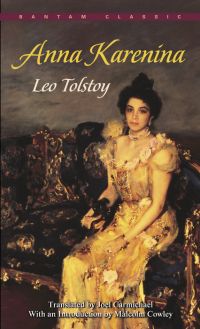
Get the Bantam Classics Carmichael translation of Anna Karenina
Includes a brief author bio and an introduction by Malcolm Cowley.
Available as a paperback (ISBN 9780553213461, 1008 pages).
Who was David Magarshack?
He was a foreign-born British writer and translator. He translated works by Chekhov, Gogol, Tolstoy and Turgenev, among others. According to Wikipedia, his career in translation began when he was approached by the editor of the Penguin Classics series to translate Dostoevsky’s Crime and Punishment. He also translated Dostoevsky’s Brothers Karamazov, and The Devils (Demons), and Notes from Underground.
About the Magarshack Translation of Anna Karenina
Chicago Tribune, “Early in ‘Anna Karanina'” by Patrick T. Reardon
The Magarshack translation is the longest by wordcount. It’s 61,000 words longer than the Rosemary Edmonds translation, which is the shortest.
This translation is mentioned in passing, if at all, in roundups of Anna Karenina translations. Hugh McLean gives example passages in the “Which English Anna?” chapter of his book In Quest of Tolstoy, but passes over Magarshack when making a final recommendation. My general sense is that there’s nothing wrong with this version of the text, it’s just not considered particularly outstanding.
Extract from the Magarshack translation of Anna Karenina
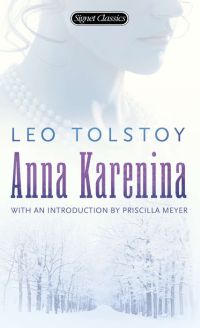
Get the Signet Classics Magarshack translation of Anna Karenina
Includes an introduction by Priscilla Mayer.
Available as a paperback (ISBN 9780451528612, 960 pages).
Who were Leonard J. Kent and Nina Berberova?
Nina Berberova was a writer who grew up in Saint Petersburg, and lived in Berlin and Paris, where she belonged to an intellectual circle of Russian exiles that included Nabokov and Pastenak, before moving to the US.
Leonard Kent was an American author, editor, teacher, professor of English, and university president. He held a PhD in Comparative Literature from Yale.
About the Kent and Berberova Garnett translation of Anna Karenina
In the editors’ note, Kent and Berberova say the Garnett translation is flawed but faithful, whereas other translators too often “leave their own signatures behind” when attempting to clarify or modernize the text. Thus they have chosen to revise the Garnett translation rather than start from scratch. What did they change?
The thousands of revisions made (some of which are extensive) are primarily concerned with correcting errors of translation, tightening the prose, converting Britishisms, and casting light on areas Mrs. Garnet did not explore.
They say Garnett’s heritage “dictated pruderies which occasionally mute some of Tolstoy”, so presumably they have restored details that a woman who was the product of the Victorian age considered too uncouth for the eyes of her contemporaries.
The approach to names, local units of money, and quotations in foreign languages is a conservative one, leaving such exotica in place but with informative footnotes as needed. A chart of civil, military, and court ranks is provided.
- In Quest of Tolstoy: “Which English Anna?” by Hugh McLean
“I consider [the Kent and Berberova Garnett translation] a very good version, even though it is based on an out-of-date Russian text. Kent and Berberova did a much more thorough and careful revision of the Garnett translation than Gibian did of the Maude one, and they have supplied fairly full notes, conveniently printed at the bottom of the page.” - New York Review: “Socks” by Janet Malcolm
“While the Kent/Berberova edition of Anna Karenina contains thousands of revisions, it essentially remains Garnett’s translation…. However, there are revisions that subvert, you could almost say Pevearise, the Garnett translation.”
Extract from the Kent and Berberova Garnett translation of Anna Karenina
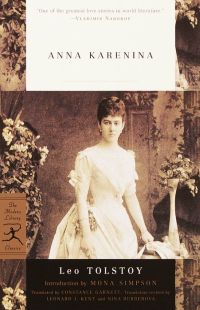
Get the Modern Library Kent and Berberova translation of Anna Karenina
Includes an introduction by Mona Simpson; an editors' note; a table of nineteenth-century Russian civil, military, and court ranks; footnotes throughout the main text; 11 pages of commentary from Tolstoy himself, Dostoevsky, The Nation, William Dean Howells, Matthew Arnold, Thomas Mann, and Vladimir Nabokov; and a Reading Guide consisting of a list of eight topics for discussion.
Available as a paperback (ISBN 9780679783305, 976 pages).
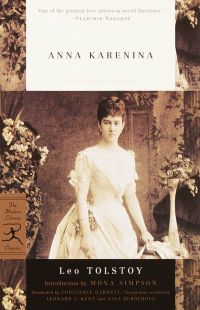
Get the Modern Library Kent and Berberova translation of Anna Karenina
Includes an introduction by Mona Simpson; an editors' note; a table of nineteenth-century Russian civil, military, and court ranks; footnotes throughout the main text; 11 pages of commentary from Tolstoy himself, Dostoevsky, The Nation, William Dean Howells, Matthew Arnold, Thomas Mann, and Vladimir Nabokov; and a Reading Guide consisting of a list of eight topics for discussion.
Available as an ebook (ISBN 9780553902297).
Who was George Gibian?
He was a writer, editor, translator, and distinguished professor of Russian and comparative literature at Cornell University. He edited 20 books and published 90 articles in total. He died in 1999.
Read the Cornell University Faculty Memorial Statement.
He was born in Prague, studied in England, fought in WWII, earned a PhD in English from Harvard, and taught at Smith, Amherst, UC Berkeley and Cornell.
About the Gibian / Maude translation of Anna Karenina
Consists of an updated version of the Maude translation plus notes. According to the publisher, “This volume reprints the 1939 edition, which the editor has revised, making twenty-one textual changes and revising or adding forty-nine footnotes.”
Includes a list of characters; a list of Russian words; the publication history of the novel; a chronology of Tolstoy’s life; extracts from letters, diaries and newspapers; an essay on Tolstoy by D.S. Mirsky; 19 critical essays, and a selected bibliography.
Extract from the Gibian / Maude translation of Anna Karenina
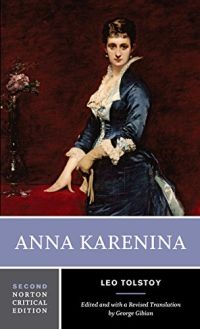
Get the Norton Gibian translation of Anna Karenina
Includes a preface; list of characters; a list of Russian words; the publication history of the novel; extracts from letters, diaries and newspapers; essays by 17 literary critics; a chronology of Tolstoy's life; and a selected bibliography.
Available as a paperback (ISBN 9780393966428, 880 pages).
Who was Margaret Wettlin?
She was an American translator of works by Tolstoy, Gorky, Pasternak and other Russian writers who lived in Russia for almost fifty years.
About the Wettlin Translation of Anna Karenina
It was originally produced in two volumes by Progress Publishers in Moscow in 1978. It was reprinted in two volumes by Raduga Publishers in Moscow in 1987.
Commonwealth Magazine: “From the Russian, with Love” by Richard Cohen
Wettlin’s translation is “’steady but uninspired, [it] sounds like English prose written by a Russian who knows the language but is not completely at home in it,’ wrote one critic.”
Extract from the Wettlin translation of Anna Karenina
Get the Wettlin Translation of Anna Karenina
Second-hand copies of the Wettlin Anna Karenina translation are available via Abebooks.
Who are Richard Pevear and Larissa Volokhonsky?
They are a husband and wife translation team known for their prize-winning translations from Russian. Their method is for Volokhonsky (the Russian expert) to produce a literal English version for Pevear (the English expert) to edit and then discuss with her, further rounds of writing and editing being undertaken as needed. They have translated works by Dostoevsky, Gogol, Pasternak, Pushkin, Chekov, and Turgenev as well as Tolstoy. Their literary success was kicked up several notches when Oprah chose their translation of Anna Karenina for her book club.
As is often the case with popular cultural products, opinions are starkly divided on the quality of their work: some have praised their unusual syntax and word choice, said to be refreshingly and absolutely authentic, while others have found it needlessly and terribly awkward.
They are among the translators of Crime and Punishment, The Brothers Karamazov, Demons, Notes from Underground, The Master and Margarita, and War and Peace. Separately, Pevear has also translated works in French, Italian, Spanish, and Greek, including The Three Musketeers.
About the Pevear and Volokhonsky translation of Anna Karenina
The Penguin Deluxe Paperback cover says: “While previous versions have softened the robust, and sometimes chocking, quality of Tolstoy’s writing, Richard Pevear and Larissa Volokhonsky have produced a magnificent translation that is true to his powerful voice…. Beautiful, vigorous, and eminently readable, this Anna Karenina will be the definitive rendition for generations to come.”
From the translators’ note: “Tolstoy’s narrative voice poses a particular challenge to the translator. To apply general notions of natural, idiomatic English and good prose style to Tolstoy’s writing is to risk blunting the sharpness of its internal dialogization.”
In Quest of Tolstoy: “Which English Anna?” by Hugh McLean
McLean calls the Pevear and Volokhonsky translation, the focus of the chapter, “perfectly adequate” and also “certainly good” but “not consistently or unequivocally superior to others on the market”. He is glad they supply explanatory notes, but says they are “not all they might be”, in part because they did not consult the Karenina Companion by C.J.G. Turner. They also should have used a different Russian text as their source. Still, their translation “follows Tolstoy’s style more closely and with less editing and ‘prettifying’ than other versions.”
The New York Review: “Socks” by Janet Malcolm
Malcolm bitterly laments the replacement of Garnett and Maude by Pevear and Volokhonsky. She dislikes their foreignizing tendency and presents pairs of passages to highlight the differences in the flow of the text.
Commentary Magazine: “The Pevearsion of Russian Literature” by Gary Morson
Morson, a diehard Garnett fan, likens the Pevear and Volokhonsky translations to Potemkin villages that appear solid but are actually as flimsy as cardboard. “[T]heir translations take glorious works and reduce them to awkward and unsightly muddles.” He worries that literature students will lose respect for translated authors whom they only glimpse by means of flawed prose. Readers in huge numbers are now, tragically, being supplied with literature “stripped bare of its own solemn mystery”.
New Yorker: “At Home in the World” by James Wood
“Great translations age, while great novels merely mature, and it would be valuable to have even an ordinary contemporary English version of Tolstoy’s book. But Pevear and Volokhonsky are at once scrupulous translators and vivid stylists of English, and their superb rendering allows us, as perhaps never before, to grasp the palpability of Tolstoy’s ‘characters, acts, situations.'”
New York Review: “Tolstoy’s Real Hero” by Orlando Figes
Pevear and Volokhonsky are lauded for conforming to Nabokov’s principle of not, in the course of translation, changing a text to suit a particular audience. They are praised in particular for preserving “Tolstoy’s syntax” with its “countless repetitions and endless sentences”. The Russian language is the real hero, and it is best revealed by Pevear and Volokhonsky.
New York Times: “New Translations of Tolstoy’s Anna Karenina” by Masha Gessen
Perhaps to help pave the way for the Schwartz and Bartlett translations, Gessen qualifies the success of two of the most popular previous versions: “Garnett’s and Pevear and Volokhonsky’s versions have enjoyed the tightest grip on the market, though it can be argued that neither came by its reputation on the basis of literary merit alone: Garnett for decades had a virtual monopoly on translating Russian classics, and Pevear and Volokhonsky sold hundreds of thousands of copies after their translation was chosen by Oprah Winfrey for her television book club. Winfrey, however, had not read the book and chose this particular translation out of consideration of convenience only: It was the most recent and therefore the most widely available at that moment.”
LA Review of Books: “An Anna Is an Anna Is an Anna” by Bob Blaisdell
“The hoopla over Richard Pevear and Larissa Volokhonsky’s translation of Anna Karenina in 2000 made me think I was going to have a doubly intense experience… It was great, but it was just another translation.” And whenever there’s a new translation, translators demonstrate “their annoying habit of denigrating the work of earlier ones.”
Extract from the Pevear and Volokhonsky translation of Anna Karenina
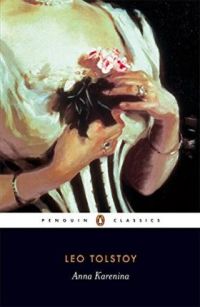
Get the Penguin Classics Pevear and Volokhonsky translation of Anna Karenina
Preface by John Bayley.
Available as a paperback (ISBN 9780140449174, 864 pages).
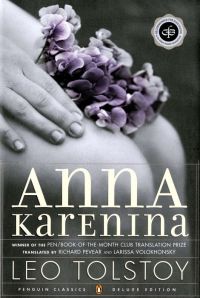
Get the Penguin Classics Deluxe Pevear and Volokhonsky translation of Anna Karenina
This specific edition is the Summer 2004 selection for Oprah's Book Club. Includes an introduction by Richard Pevear, a translators' note, a list for further reading, a list of principal characters, and endnotes.
Available as a paperback (ISBN 9780143035008, 864 pages).
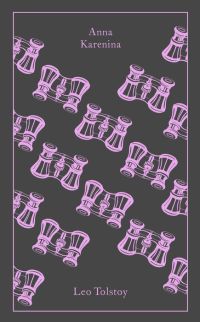
Get the Penguin Clothbound Classics Pevear and Volokhonsky translation of Anna Karenina
Available as a hardcover (ISBN 9780141199610, 864 pages).
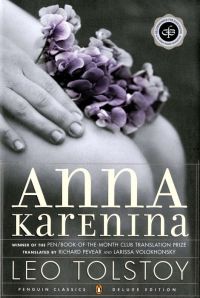
Get the Penguin Classics Deluxe Pevear and Volokhonsky translation of Anna Karenina
Includes an introduction by Richard Pevear, a translators' note, a list for further reading, a list of principal characters, and endnotes.
Available as an ebook (ISBN 9781101042472).
Who are Kyril Zinovieff and Jenny Hughes?
Bio of Kyril Zinovieff at Alma Books
Bio of Jenny Hughes at Alma Books
About the Zinovieff and Hughes translation of Anna Karenina
“The new translation into accurate and readable English by Kyril Zinovieff and Jenny Hughes surpasses even the most recent version by Richard Pevear and Melissa Volokhonsky . . . [it] makes the word order sound as natural in English as was the original in Tolstoy’s Russian.” – The Times Literary Supplement
“Kyril Zinovieff has produced a fine, intelligent, sensitive translation that brings the Russian text alive in a way that immediately enriches a reader’s awareness of its intentions and nuances.” – East West Review
Extract from the Zinovieff and Hughes translation of Anna Karenina
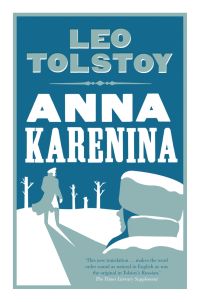
Get the Alma Classics / Evergreens Zinovieff and Hughes translation of Anna Karenina
Contains a preface, a translator’s note, endnotes, a bibliography, and 30 pages of extra material on Tolstoy's life and works.
Available as a paperback (ISBN 9781847493682, 912 pages).
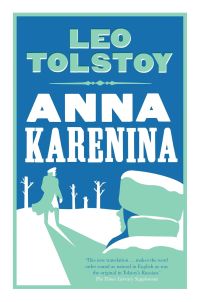
Get the Alma Classics / Evergreens Zinovieff and Hughes translation of Anna Karenina
Contains a preface, a translator’s note, endnotes, a bibliography, and 30 pages of extra material on Tolstoy's life and works.
Available as an ebook (ISBN 9780714545974).
Who is Rosamund Bartlett?
Rosamund Bartlett is a British writer, scholar, translator, and lecturer with expertise in Russian literature, music, and art. She has written biographies of Tolstoy and Chekhov.
Her website is http://www.rosamundbartlett.com/.
Russia Beyond: Interview with Rosamund Bartlett by Alendra Guzeva.
About the Bartlett translation of Anna Karenina
“Tolstoy loved the particular properties of the Russian language, but he would not have expected them to be reproduced exactly in translation, and would have surely expected his translators to draw on the particular strengths of their own languages. the aim here, therefore, is to produce a translation which is idiomatic as well as faithful to the original, and one which ideally reads as if it was written in one’s own language.” (Notes on the Text and Translation, p. xxxviii)
Wall Street Journal: “Two New Translations of Anna Karenina” by Sam Sacks
“I read back and forth between Ms. Schwartz’s and Ms. Bartlett’s translations, and I can honestly say that both are clear and forceful and that both capture the novel’s powerful forward momentum and its signal moments of revelation. Only minor differences separate them—from each other and from earlier editions. Ms. Bartlett, the author of a superb biography of Tolstoy, has produced a more classically elegant translation, which is mirrored in the book’s beautiful packaging, right down to the sewn-in ribbon bookmark.”
LA Review of Books: “An Anna Is an Anna Is an Anna” by Bob Blaisdell
“Bartlett’s phrasings give us the feeling of real speech, and her Anna sounds like Anna.”Each to his own taste, but if you read them aloud you’ll just naturally want to loosen up Schwartz’s, like kicking up the tight sheets of a hotel bed.”
The Guardian: “Anna Karenina – the devil in the details” by Rosamund Bartlett
“Do we need another translation of Anna Karenina? … Translators will keep ascending the towering peaks of world literature, just as there will continue to be assaults on Everest.”
The Chicago Tribune: “Rosamund Bartlett’s translation of Anna Karenina” by Jane Schmidt
Bartlett says she aims for idiomatic English and faithfulness to Tolstoy. “In attempting to fulfill such a contradictory aim, Bartlett, a talented stylist, succeeds in crafting an aesthetically pleasing translation that reads naturally in English; however, she has not met the considerable challenge of simultaneously retaining Tolstoy’s style…. To make contact with the sincerity of Tolstoy’s soul, we must turn instead to Pevear and Volokhonsky.”
New York Times: “New Translations of Tolstoy’s Anna Karenina’ by Masha Gessen
“Rosamund Bartlett, a longtime scholar of Russian literature and culture and a biographer of both Tolstoy and Chekhov, creates an updated ironic-Brit version of Tolstoy.”
Afisha: “Interview with cultural historian and writer Rosamund Bartlett”
Bartlett says Garnett’s Edwardian English sounds dated but Tolstoy’s Russian does not, and that she used the “most accurate version” of Tolstoy’s text.
Oxford University Press Blog: “A Woman’s Iliad?” by Rosamund Bartlett
Bartlett explains the painting on the cover of the Oxford World’s Classics edition.
Tolstoy Therapy: “Initial Thoughts on Rosamund Bartlett’s Translation of Anna Karenina” by Lucy
“For new and existing readers alike, Bartlett’s introduction does much to illuminate Tolstoy’s shaping of Anna Karenina and our modern reading. The introduction also makes a neat defence of her translation decisions.”
Extract from the Bartlett translation of Anna Karenina
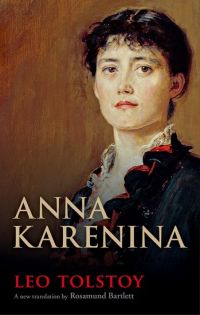
Get the Oxford World’s Classics Bartlett translation of Anna Karenina
Includes an introduction, a note on the translation, endnotes, a select bibliography, a chronology of Tolstoy's life, a list of characters, and a guide to pronunciation.
Available as a hardcover (ISBN 9780199232086, 896 pages).
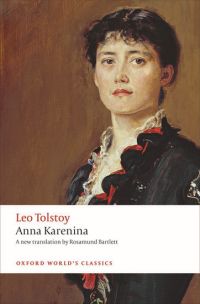
Get the Oxford World’s Classics Bartlett translation of Anna Karenina
Includes an introduction, a note on the translation, endnotes, a select bibliography, a chronology of Tolstoy's life, a list of characters, and a guide to pronunciation.
Available as a paperback (ISBN 9780198748847, 896 pages).

Get the Oxford World’s Classics Bartlett translation of Anna Karenina
Includes an introduction, a note on the translation, endnotes, a select bibliography, a chronology of Tolstoy's life, a list of characters, and a guide to pronunciation.
Available as an ebook (ISBN 9780198748847).
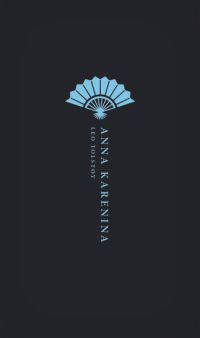
Get the Oxford World’s Classics Bartlett translation of Anna Karenina
Includes an introduction, a note on the translation, endnotes, a select bibliography, a chronology of Tolstoy's life, a list of characters, and a guide to pronunciation.
Available as a hardcover (ISBN 9780198800538, 896 pages).
Who is Marian Schwartz?
Marian Schwartz is an American translator of Russian fiction and nonfiction. She studied Russian at Harvard University, Middlebury Russian School, and Leningrad State University and holds a Master of Arts in Slavic Languages and Literatures from the University of Texas at Austin.
Her website is https://www.marianschwartz.com/.
Cleaver Magazine: “A conversation with translator Marian Schwartz” by Ryan K. Strader
About the Schwartz translation of Anna Karenina
Wall Street Journal: “Two New Translations of Anna Karenina” by Sam Sacks
“I read back and forth between Ms. Schwartz’s and Ms. Bartlett’s translations, and I can honestly say that both are clear and forceful and that both capture the novel’s powerful forward momentum and its signal moments of revelation. Only minor differences separate them—from each other and from earlier editions…. Ms. Schwartz stresses Tolstoy’s artless, intuitive side by retaining his repetitions (whereas Ms. Bartlett deploys synonyms) and eschewing commas in long sentences. Her edition, prefaced by a provocative if pretentious introduction by Gary Saul Morson, feels slightly more academic in tone and presentation.”
LA Review of Books: “An Anna Is an Anna Is an Anna” by Bob Blaisdell
“Each to his own taste, but if you read [the Bartlett translation and the Schwartz translation] aloud you’ll just naturally want to loosen up Schwartz’s, like kicking up the tight sheets of a hotel bed.”
The National News: “New translation of Anna Karenina more in the spirit of Tolstoy” by Steve Donoghue
“Schwartz has produced a comparatively lean and straightforward Anna Karenina, one far more Tolstoyan than most of its English-language predecessors.”
New York Review: “Socks” Janet Malcolm
Malcolm accuses Schwartz of “obtrusive literalism” and says “[her] attempt to ‘re-create Tolstoy’s style in English’ surpasses P&V’s in ungainliness. Schwartz actually ruins one of the most moving scenes in the novel.”
Russian Dinosaur: “Scylla and Charybdis: steering between Tolstoy translations” by Muireann Maguire
“Peaceful and rather scholarly debate spilled over into the global media when the journalist Janet Malcolm wrote an extended review of Tolstoy translations in The New York Review of Books, Socks, which attacked Schwarz’s Anna…. The viciousness of this review galvanized readers, translators, and academics to take sides or at least to discuss the issue.”
New York Times: “New Translations of Tolstoy’s Anna Karenina’ by Masha Gessen
“Marian Schwartz, Bartlett’s distinguished American competitor who has translated a great variety of Russian authors, has produced what is probably the least smooth-talking and most contradictory Tolstoy yet…. [W]hile Schwartz seems to have a better ear for the Russian, her translation is often in the end less readable than Bartlett’s.”
Extract from the Schwartz translation of Anna Karenina
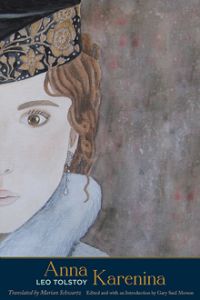
Get the Yale Schwartz translation of Anna Karenina
Includes an introduction by Gary Saul Morson, a translator's note, a list of characters, and endnotes.
Available as a paperback (ISBN 9780300216820, 761 pages).
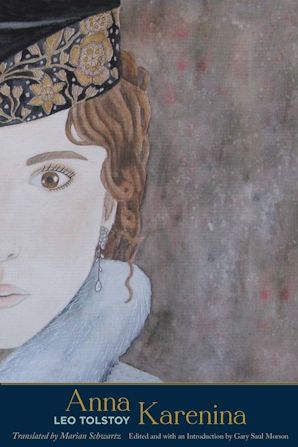
Get the Yale Schwartz translation of Anna Karenina
Includes an introduction by Gary Saul Morson, a translator's note, a list of characters, and endnotes.
Available as an ebook (ISBN 9780300210798).
Expert Opinion: Hugh McLean
In the “Which English Anna?” chapter of his book In Quest of Tolstoy, Hugh McLean, the late professor of Slavic Languages and Literatures at University of California, Berkeley, has this to say:
None of the existing translations is actively bad. From any of them the ordinary English-speaking reader would obtain a reasonably full and adequate experience of the novel. The English in all of them sounds like English, not translationese. I found very few real errors and only a few omissions, and of the latter most were only a few words or phrases. One’s choice among the existing translations must therefore be based on nuances, subtleties, and refinements.
So perhaps there has been an unnecessary amount of fuss about which translation is the best.
Still, so as to arrive at some sort of recommendation, McLean compared the translations available at the time: Pevear/Volokhonsky, Maude, Maude revised by Gibian, Garnett revised by Kent/Berberova, Edmonds, Magarshack and Carmichael. He “disqualifies” Maude on account of some “disturbing errors” and “eliminates” Magarshack and Carmichael because they are not better than the others and they lack explanatory notes. Edmonds also lacks notes, so in the end he seems to prefer Kent/Berberova and Pevear/Volokhonsky.
Expert Opinion: Henry Gifford
In “On translating Tolstoy” in New Essays on Tolstoy (1978), edited by Malcolm Jones, Henry Gifford, Professor of English Literature and Professor of Comparative Literature at Bristol University says:
There are four translators of Tolstoy ahead of all others in English—Louise and Aylmer Maude, working usually together but sometimes separately; Constance Garnett; and Rosemary Edmonds whose Penguin versions are now widely know. It seems better to leave N. H. Dole and Professor Leo Wiener out of the reckoning. They were pioneers, but nobody is going to argue that the quality of their work has earned them more than a wayside cross.
Gifford does not seem wholly satisfied by any of the top three translations he mentions; one supposes that any one of them is acceptable despite its imperfections. I am not sure why he does not mention any of the others (Townsend, Carmichael, Magarshack, Kent/Berberova), even to dismiss them.
Expert Opinion: Catriona Kelly
In The Oxford guide to literature in English translation: “Tolstoy” (2000), Catriona Kelly says that while Gifford praises the Maude translation’s accuracy, the Edmonds translation’s dialogue, and the Garnett translation’s ‘modest harmonies’, she finds that “the similarities of the various versions are a good deal more striking than their differences” and wonders whether it isn’t time someone took a less restrained approach. She got her wish!
Non-Expert Personal Opinion
I read and enjoyed the Maude translation.
If I were to pick one for a second reading, I would pick the Bartlett translation.

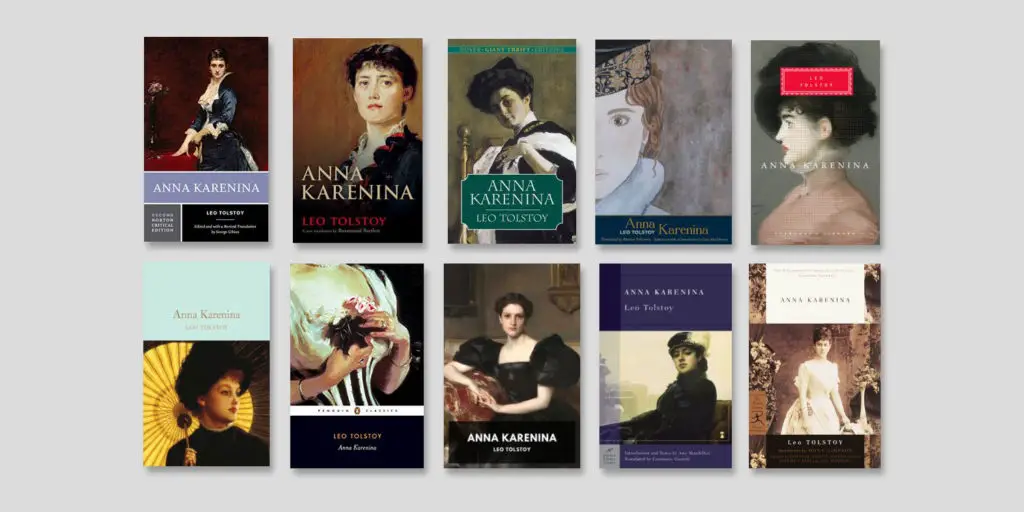
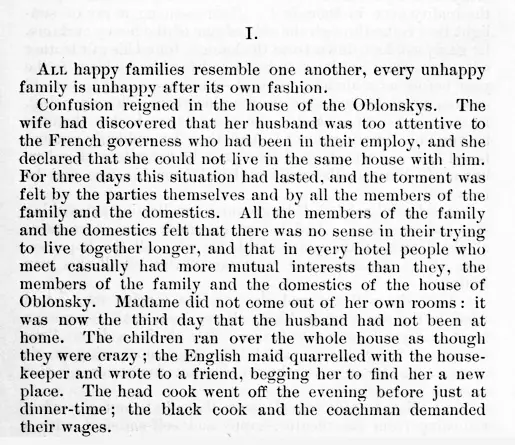
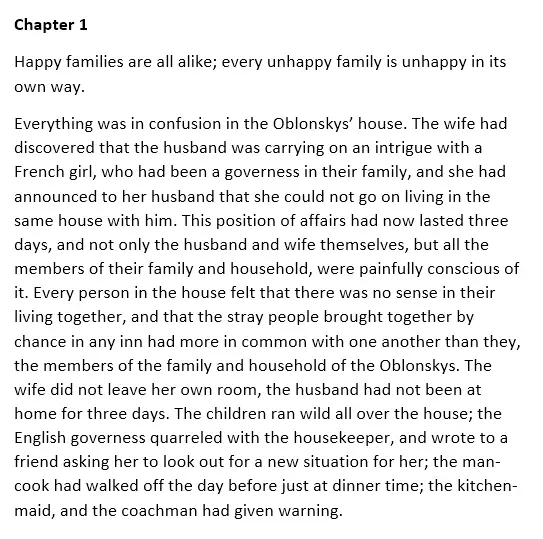
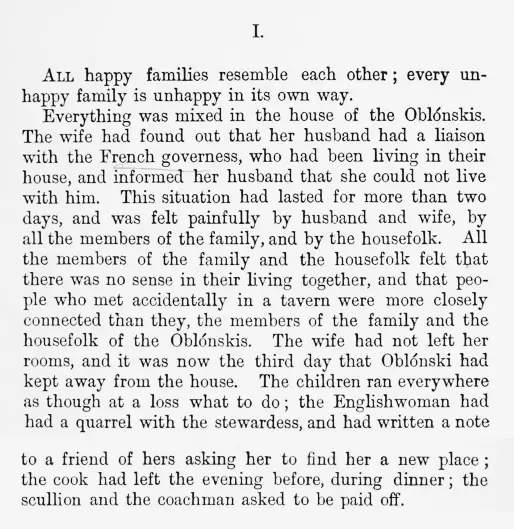
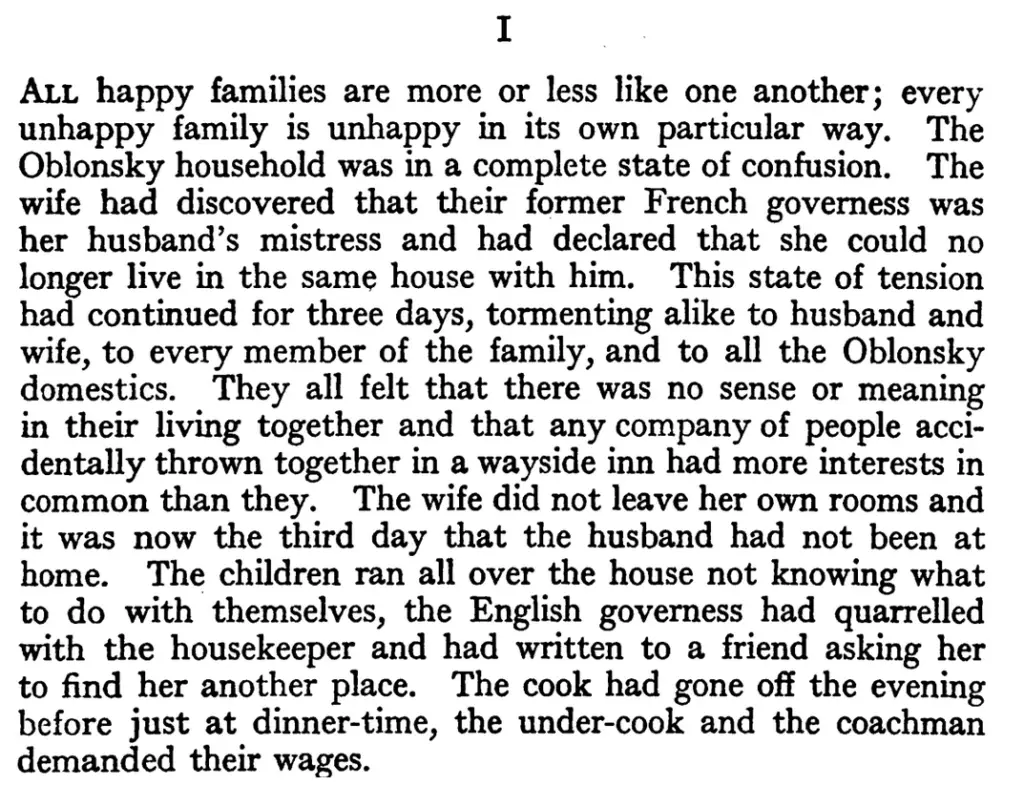
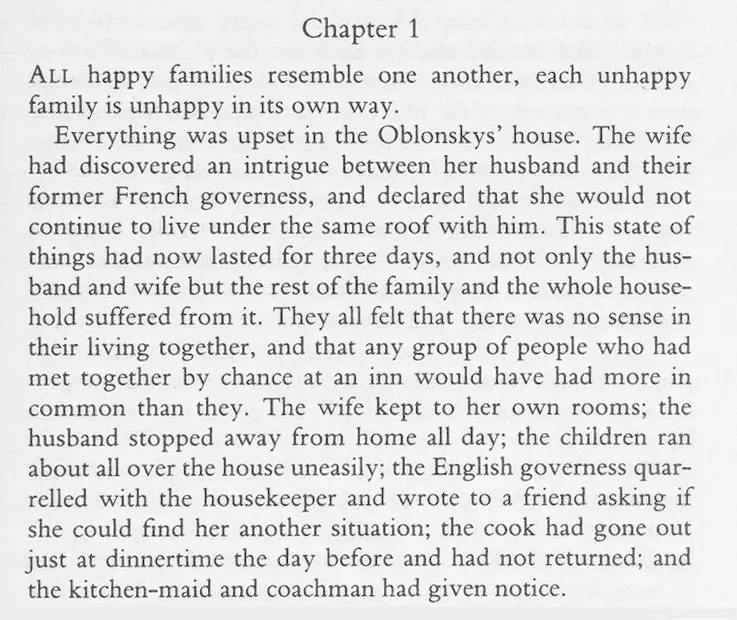
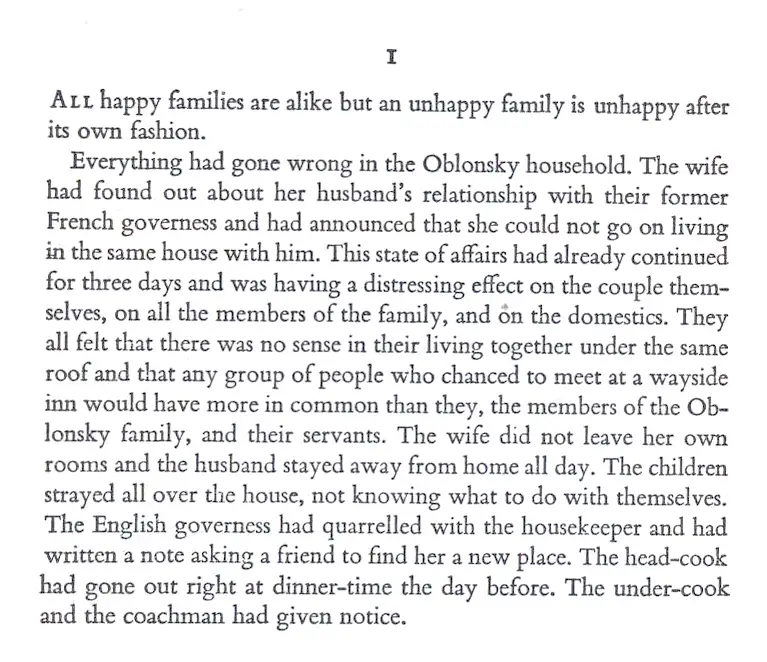


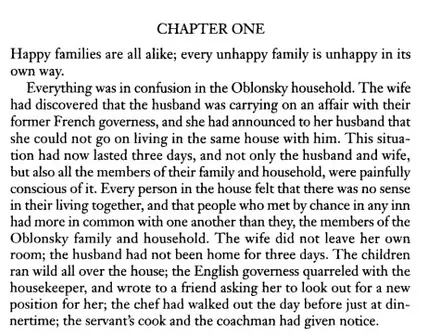
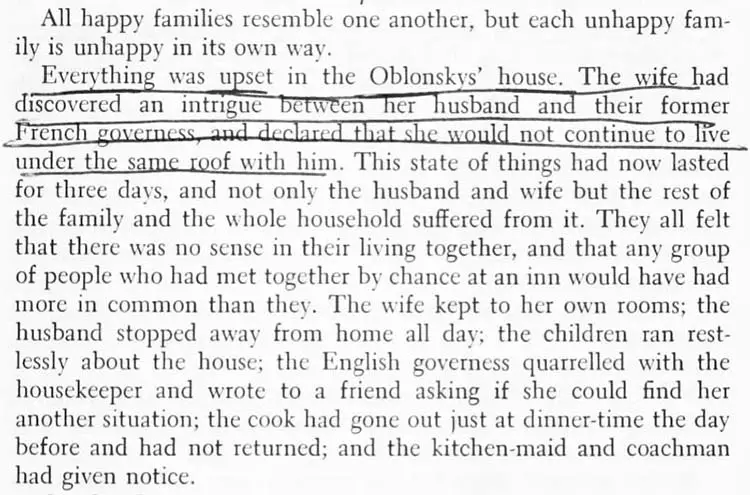
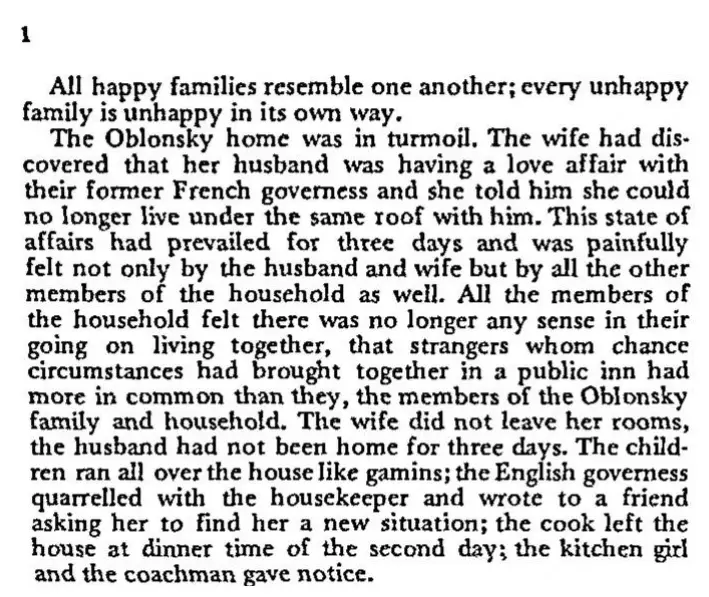
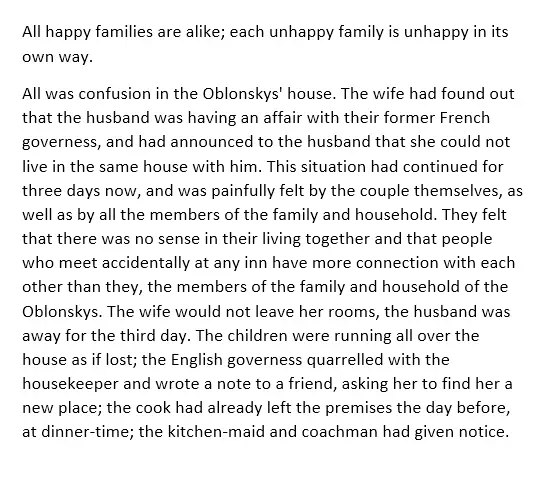

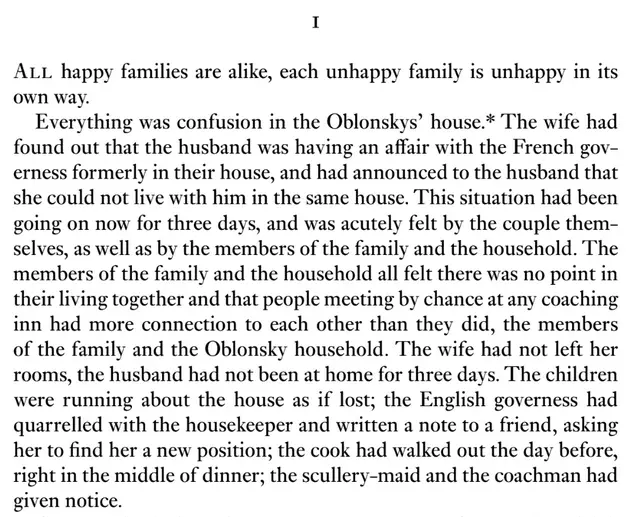
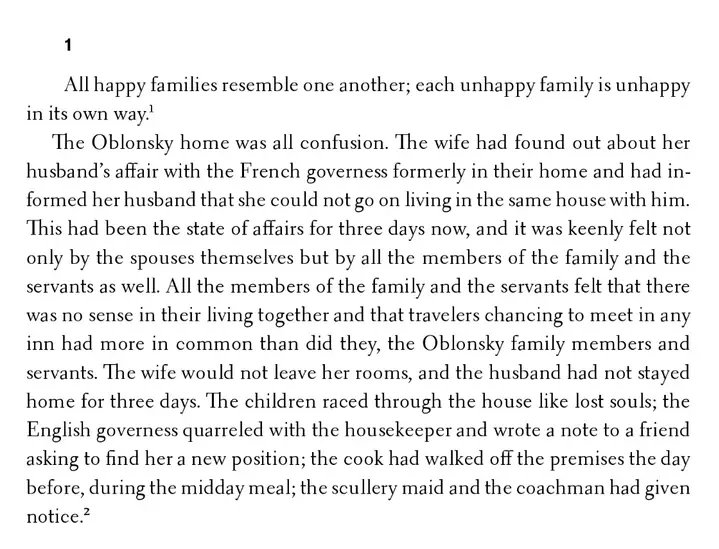
What translation does Kindle use?
Hi Bernard, thanks for your question! Many of the English translations of Anna Karenina are available as Kindle ebooks: Garnett, Maude, Kent & Berberova, Pevear & Volokhonsky, Zinovieff & Hughes, Bartlett, and Schwartz. (I’ve just updated the page because I didn’t previously list the ebook versions of a couple of these.)
Statistically speaking, if you have a Kindle version of Anna Karenina but you don’t know which ebook you have, you probably have Garnett or Maude. Those are old public domain translations that aren’t copyrighted anymore. Anybody can re-publish an ebook of either of those translations, so there are a lot of them! You can try comparing the beginning of the text with the samples on the page to see which version matches.
I have been taking a university interest course in Tolstoy. Our teacher, whose opinions I value, recommends PV for both War and Peace and Anna. Despite PV being twice winners of the PEN Translation Award, I find the translations difficult to read, bordering on stodgy at times. For War and Peace I have gone to the Rosemary Edmonds translation, now sadly out of print — it reads, for me, not like a translation at all, very smooth and compelling. (This is pending a look at the Maude new revision.) For Anna, I was delighted to discover Alma Classics from the UK, whose Anna is superb. Carmichael and Briggs are just too colloquial. I cannot understand why Edmonds is not still in Penguin, even after nearly sixty years.
Thank you so much for this awesome article!
I read Anthony Briggs’ translation of War and Peace and loved it. I wish he had translated Anna K as well.
I don’t like RP&LV translations. I feel they are pedantic and dry. Their only translation I liked is of The Brothers Karamazov.
For Anna K, so far, I resorted to David Magarshak. His translation might have shortcomings, but it is smooth.
After reading the excerpts here, I think I’ll like Zinovieff and Hughes translation. I have ordered a copy.
Thank you so much!
Zinovieff and Hughes translation
Ravi, I think that Anthony Briggs, in an attempt to be “modern” becomes too colloquial. I cannot imagine the soldiers using the f word, or period equivalent, and the wording is too resolutely British. (I am in Canada.) I agree with you about PV versions, awards notwithstanding. For Anna, do have a look at the new translation by Kyril Zinovieff in Alma Classics. I think it makes Anna seem like a new novel; I was so pleased to have discovered it here. Bonne lecture!
which translation would you recommend???
It depends on what you’re looking for. I read the Maude translation. That one is fine. If I were to pick one for a second reading, I would pick the Bartlett translation.
Excellent analysis and very useful.
Translation: Bartlett
Book covers: Standard eBooks Garnett, Bartlett (not unlike Rosamund Bartlett herself)
War & Peace: A&L Maude, Pevear & Volokhonsky
Thanks for your comments, Simon!
Recently I learned that the painting used for the Standard eBooks edition is also used on the 2003 Penguin Classics book “Portrait of a Lady” by Henry James!
According to Standard eBooks, the painting is Elizabeth Winthrop Chanler (Mrs. John Jay Chapman), completed in 1893 by John Singer Sargent. It’s also on a book about some of his paintings: Sargent’s Women